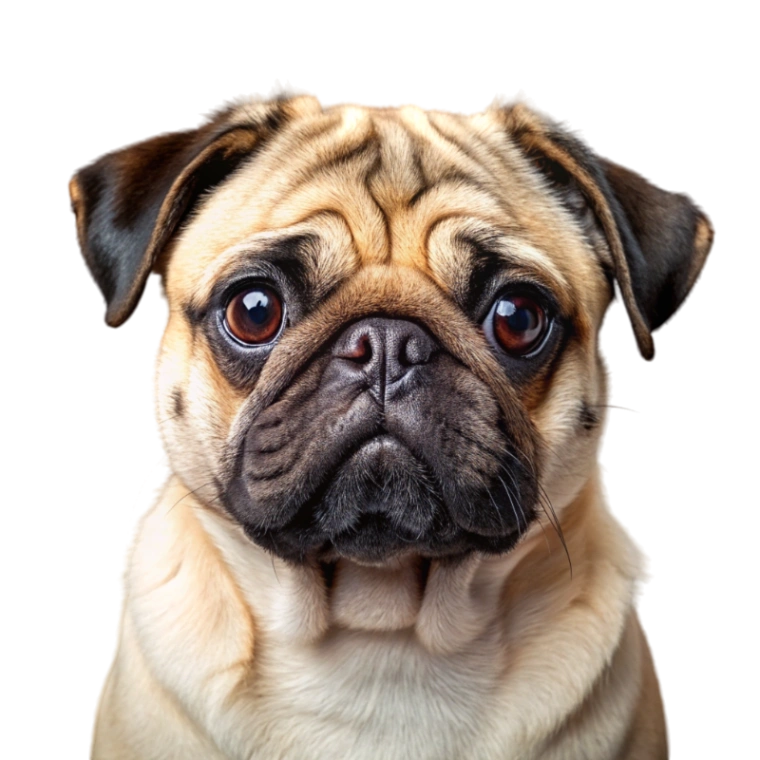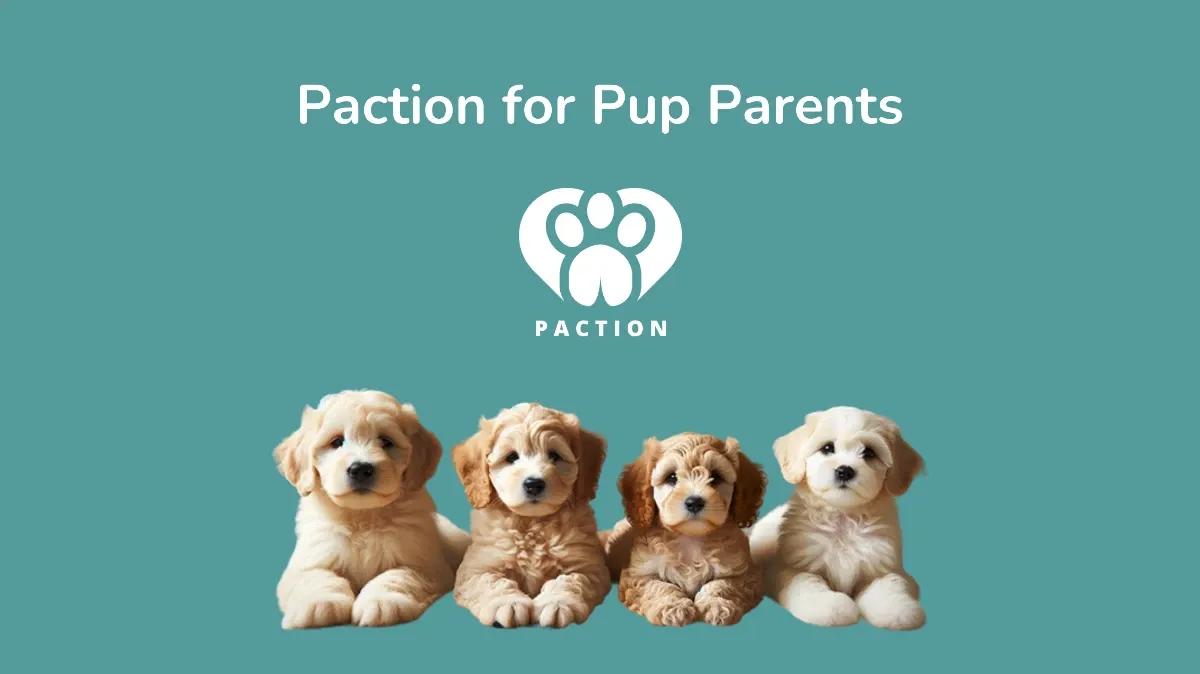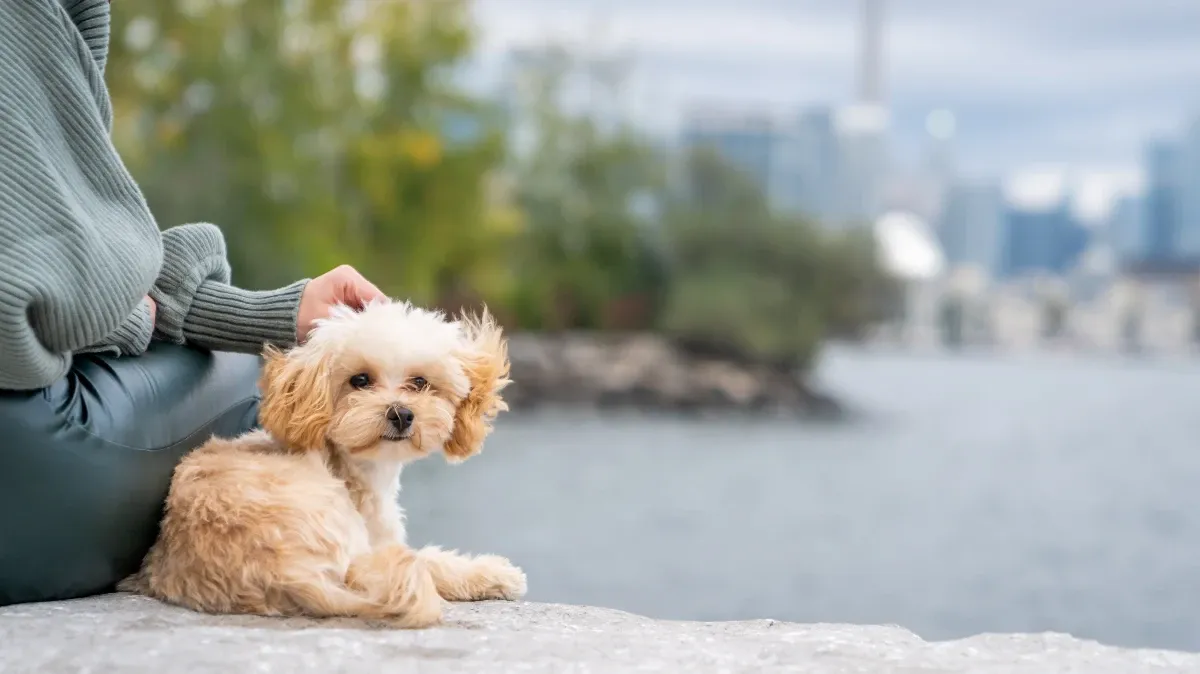Pug





 Find Reputable Breeders Near You
Find Reputable Breeders Near You
Browse Reputable Breeders who meet Paction's Certification standards.
Search for a PupGet to Know Pugs
- Royal Companions: Pugs originated in ancient China, where they were bred to be companion dogs for Chinese emperors. Their charming personalities and distinctive appearance made them favorites in the imperial court, and they were often lavished with luxury. Pugs were later brought to Europe, where they became the preferred companions of royalty and nobility.
- Charming and Playful: Pugs are known for their playful, affectionate nature. They love being the center of attention and are often described as "clowns" because of their humorous antics. Pugs thrive on human companionship and are happiest when they are with their families, whether they are cuddling on the couch or playing in the yard.
- Brachycephalic Breed: Pugs have a distinctive flat face, a trait known as brachycephaly, which can lead to breathing difficulties. This unique facial structure gives them their adorable wrinkled expression, but it also means that Pugs need to be monitored in hot weather and during exercise to prevent overheating.
- Low Maintenance Coat: Pugs have a short, smooth coat that is easy to care for, though they do shed year-round. Regular brushing will help keep their shedding under control, and their skin folds should be cleaned regularly to prevent infections.
- Health and Care: In addition to breathing issues, Pugs are prone to hip dysplasia and eye problems due to their prominent eyes. Regular veterinary checkups and a healthy diet are important to ensure they live a long, healthy life of 12-15 years.
Breed History
The Pug is an ancient breed that traces its origins back over 2,000 years to China, where it was bred as a companion dog for royalty and nobility. Known for their distinctive wrinkled face and curly tail, Pugs were highly prized and often kept as lapdogs for Chinese emperors. They later made their way to Europe in the 16th century, becoming popular among European aristocracy, particularly in Holland, where they became a symbol of the House of Orange. Today, the Pug is beloved worldwide for its charming personality and endearing appearance.
Personality and Behaviour
- Affectionate and Loyal: Pugs are known for their loving and loyal nature. They thrive on companionship and enjoy spending time with their families, making them excellent lapdogs. Their strong bond with their owners often leads to a desire to be near them at all times, earning them the nickname "shadow dog." Pugs are great with children and can adapt well to various household dynamics.
- Playful and Entertaining: Despite their compact size, Pugs are playful and full of energy. They enjoy games and interactive play, often entertaining their owners with their goofy antics. While they have bursts of energy, they are also content to lounge around, making them well-suited for families with varying activity levels.
- Sociable and Friendly: Pugs have a sociable and outgoing personality, making them friendly with strangers and other pets. They rarely show aggression and are generally tolerant, which makes them excellent companions for households with multiple pets. However, their friendliness can sometimes make them poor watchdogs, as they are more likely to greet a stranger than to alert their owners.
Care
- Exercise: Pugs are moderately active dogs and require daily exercise to maintain a healthy weight and prevent obesity. Short walks and play sessions are sufficient, as Pugs can easily overheat due to their brachycephalic (flat-faced) structure. Avoid vigorous exercise, especially in hot or humid weather, and always provide access to fresh water and a cool environment.
- Grooming: Pugs require consistent care to maintain their health and well-being, particularly due to their unique physical characteristics, such as their flat face and wrinkles. Their short coat requires minimal grooming, but their wrinkles and folds must be cleaned regularly to prevent infections. Wipe their wrinkles with a damp cloth and dry them thoroughly to avoid skin irritation. Regular bathing, nail trimming, and dental care are also essential parts of their grooming routine.
- Training and Socialization: Training a Pug can be a fun and rewarding experience, as they are eager to please and enjoy learning new tricks. However, their occasional stubborn streak requires patience and consistency. Positive reinforcement techniques, such as treats and praise, work best. Early socialization is important to ensure they grow into well-rounded dogs, as it helps them feel comfortable around other people, pets, and environments.
Pug Summary
How Much Does It Cost to Own a Pug Per Year?
Determining the cost of owning a Pug is essential for responsible dog ownership. Use our calculator to estimate expenses, including food, grooming, veterinary care, and more.
The Ultimate Dog Cost Calculator
 Calculate Now
Calculate Now

